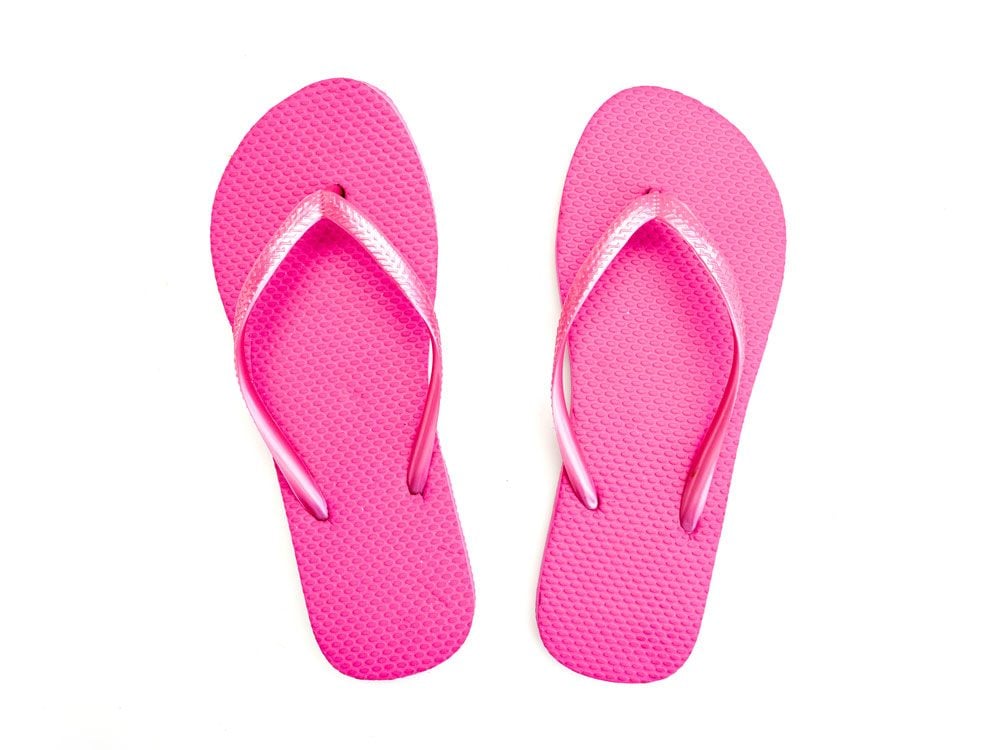
You could sprain your ankle
Those rubber flip-flops you picked up for cheap are fine for the beach, but you won’t want to wear them all day. They have virtually no arch support, which means your feet will start to turn toward the middle of your body instead of staying straight. When that happens, you’re more likely to sprain your ankle, says Eunice Ramsey-Parker, DPM, MPH, associate professor of podiatric medicine and clinic administrator of the Foot Center of New York. “They won’t trip over anything, but because they don’t have support, they twist their ankle in or out,” she says.
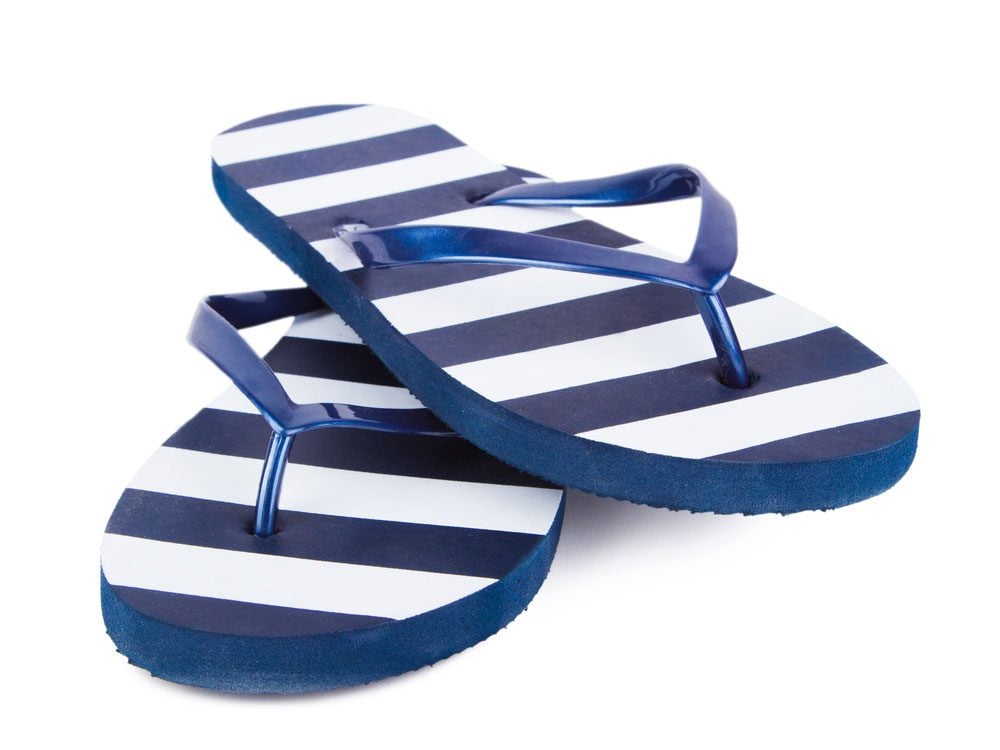
You foot could get inflamed
Even if you’re extra careful and don’t twist your foot, that lack of arch support could kill your feet. Without the right support, your plantar, the band of tissue in the arch of your foot, will start to pull. That pulling inflames the tissue, making your arch red and painful from a condition called plantar fasciitis. “When you try to step down on your foot, you have excruciating pain in the arch,” says Dr. Ramsey-Parker. To get the inflammation down, you might need to use anti-inflammatory medications like ibuprofen, physical therapy, exercise, or cortisone injections.
Suffering from aching feet? Try these home remedies to help soothe foot pain.
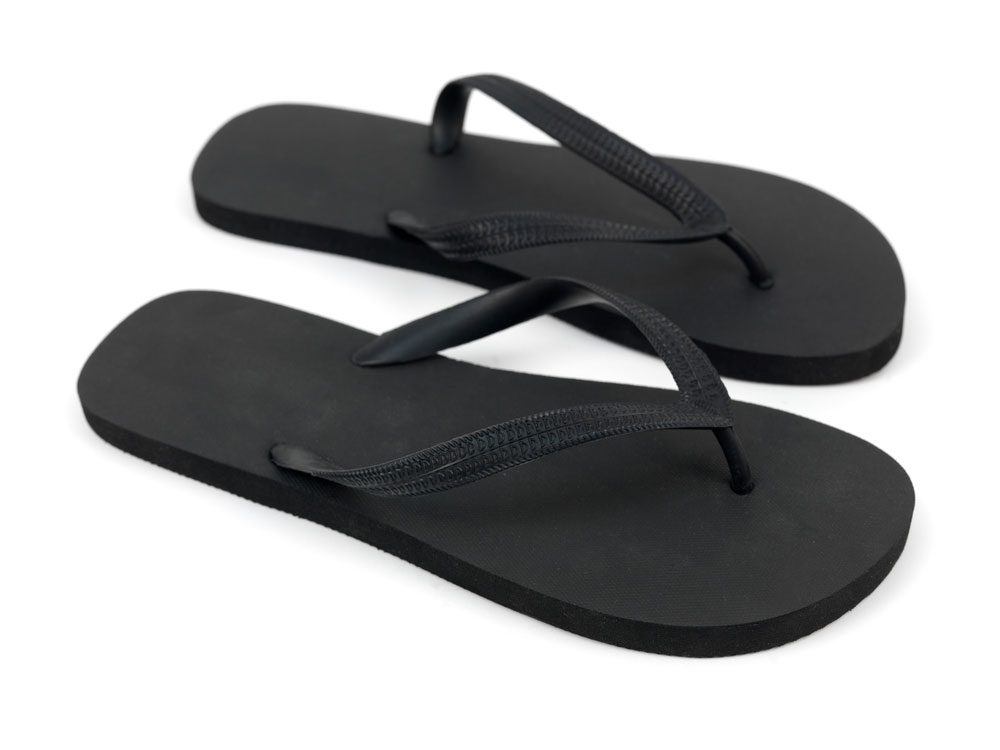
Foot problems could run bone-deep
With too many bouts of plantar fasciitis, your body will start producing new bone to try to heal the pulling. With more bone than the body needs, a buildup called a heel spur could develop on the back or bottom of your heel. “The spur is like a little point that’s pinching and pulling,” says Dr. Ramsey-Parker. “It’s a very painful area.” If the same treatments used for plantar fasciitis don’t work, you might need surgery to get it back to normal, she says.
Familiarize yourself with these strange symptoms that can signal a serious disease.
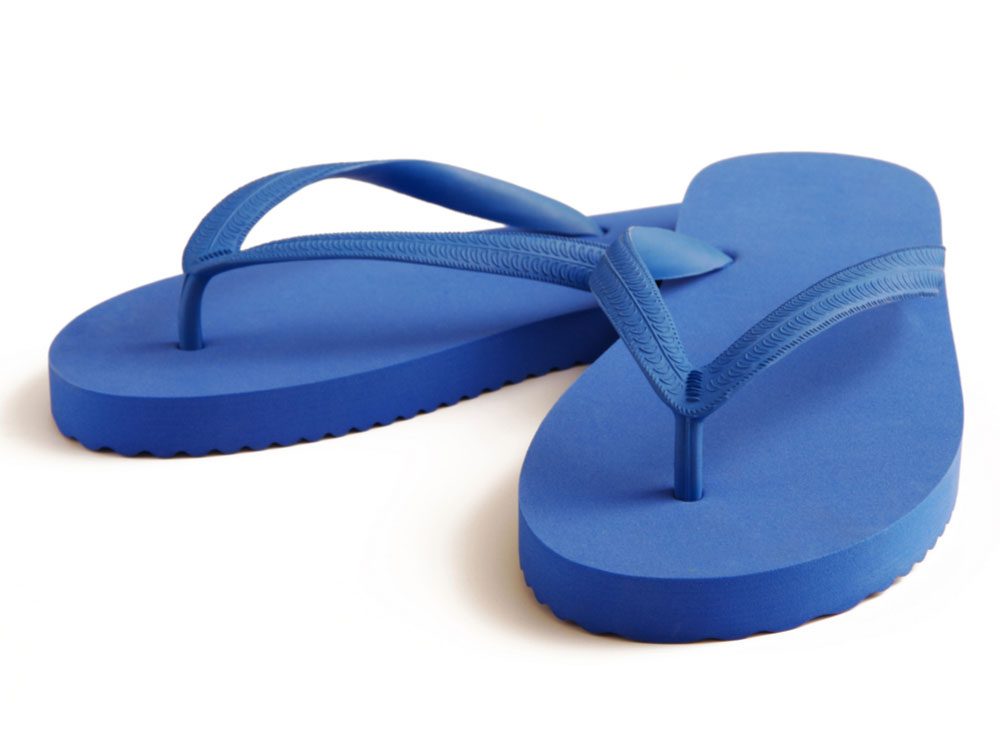
You’ll twist your toes in—and they’ll stay there
Flip-flops are, well, floppy, so you probably need to curl your toes down to keep them from flying off while you walk. But wear them enough and they might not straighten out once your shoes are off. “The toes actually bend up and stay in a fixed position that looks like a little hammer,” says Dr. Ramsey-Parker. It’s a deformity called—you guessed it—hammertoe.
Use these smart tricks to keep your shoes stink-free.
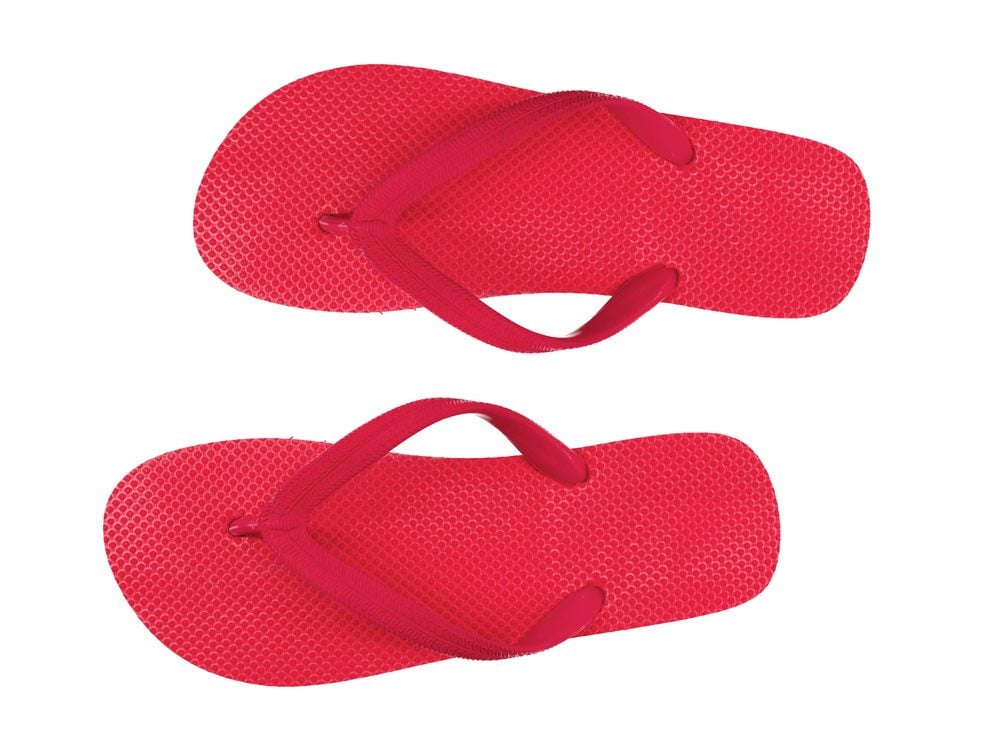
You’ll get corns
If you have hammertoe and put on regular shoes, your toes will start rubbing against the top of the shoe. All that friction could give you corns, says Dr. Ramsey-Parker. “It’s a big snowball,” she says.
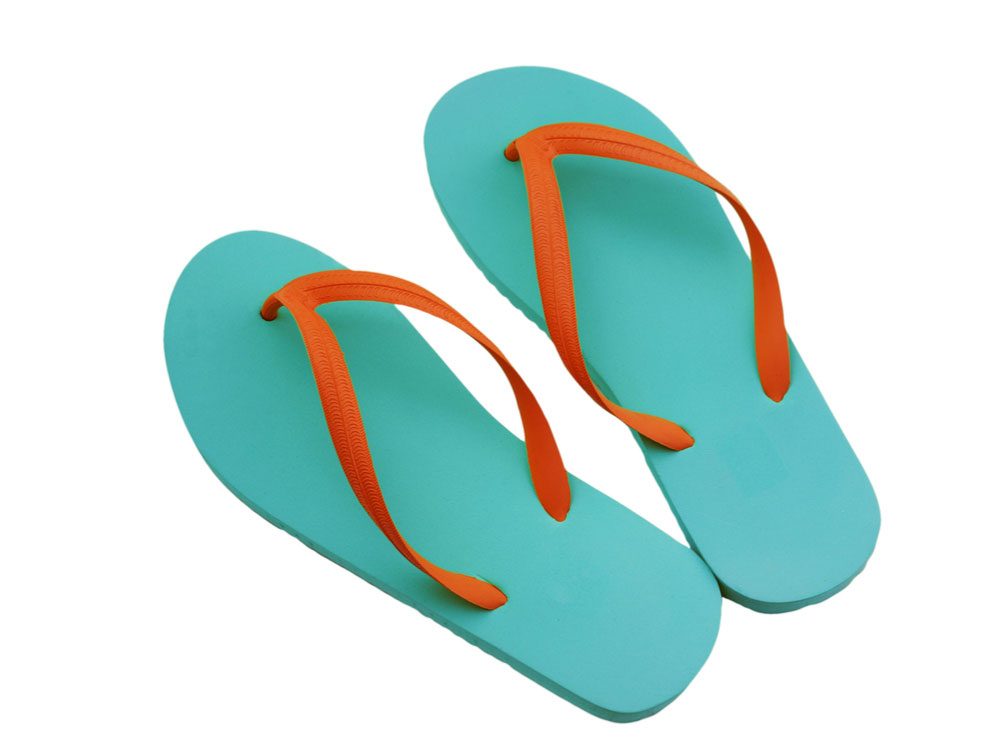
The ball of your foot could hurt
With a normal closed shoe with arch support, your foot naturally steps from heel to toe, rolling along the ball of your foot. But because flip-flops don’t have that arch support, you just step flat, hitting the ball of your foot hard, says Dr. Ramsey-Parker. “When you hit something long enough walking, it becomes irritated,” she says. You’ll feel pain and maybe experience a bit of swelling from an injury called metatarsalgia, but it will go down if you switch to more supportive shoes.
These are the body parts you’ve been washing all wrong.
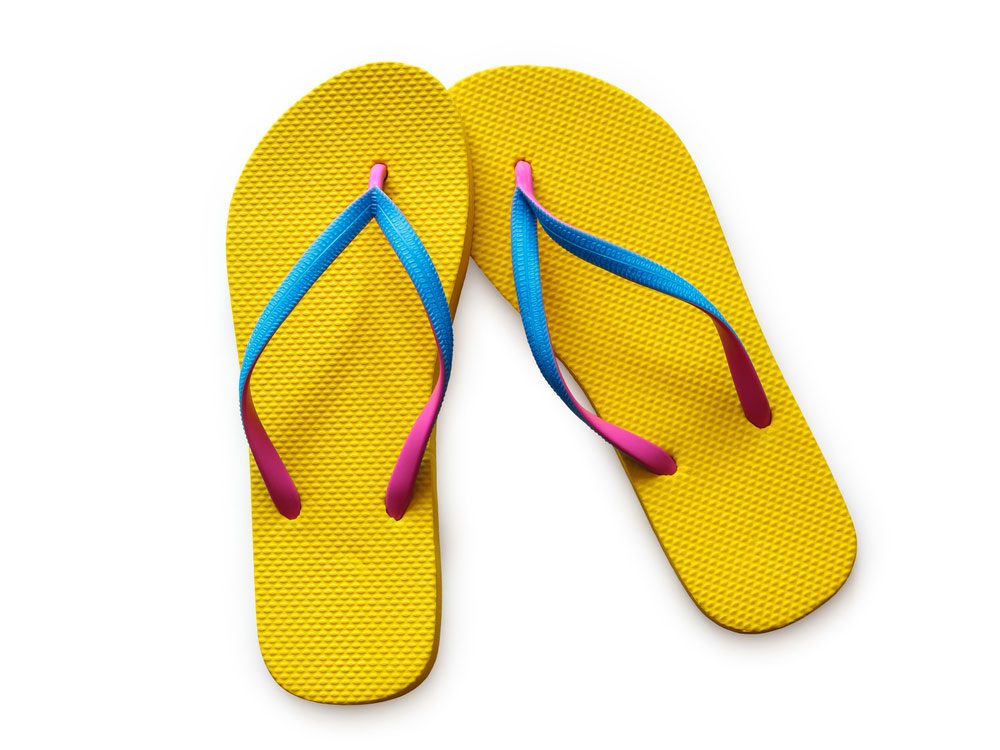
You’ll change your stride
Your body is trained to use the heel-toe stride of normal shoes. When you switch that up, your body will naturally start taking smaller strides to keep you stable, says Dr. Ramsey-Parker. “It’s going to be very halted, very pressured steps,” she says.
Next, here are the subtle signs of disease your feet can reveal.